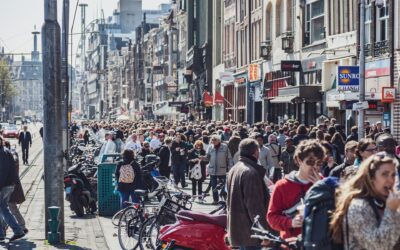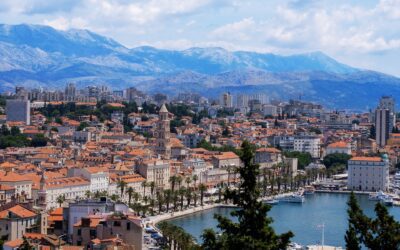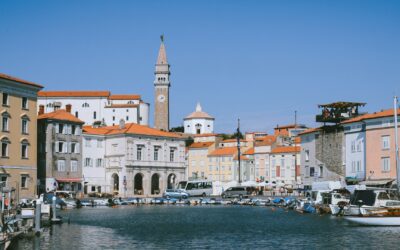|
|
Digital nomads are changing the tourism industry as busy professionals with expendable incomes travel more and have different priorities when choosing destinations. While the estimated 40 million digital nomads may only be a small portion of the overall international tourist market of around 1.5 billion international travelers a year, because they travel frequently, they have a disproportionate impact on the market, and they are joined by the increasing number of people taking workations.
Considering this trend, Andrew Wobel, writing for Emerging Europe, recently wrote a commentary on how certain cities, such as Budapest, Krakow, Tbilisi, and Skopje, are rebranding themselves not just as top tourist destinations but as creative hubs. While historical sites, cultural and green venues, and fine local restaurants are still important, they are also fostering coworking hubs, start-up incubators, and entrepreneurial exchanges that support local talent and attract international remote workers.
This transformation can be challenging to get right as these travelers tend to be looking for both an authentic cultural experience and a tech-savvy and entrepreneurial environment. So, what are some of the cities getting it right?
Tbilisi, Georgia
Georgia used to be known as a “Shire-like” haven at the crossroads of Europe and Asia where you could expect clean air and village life.
It has since reinvented itself with creative cafes, coworking spaces, and international restaurants popping up all over the capital Tbilisi. The city now mixes an affordable cost of living with a thriving expat community.
The government has also implemented various initiatives to support local growth such as the Startup Georgia program that offers funding, mentorship, and resources to promising startups. There has also been a focus on developing homegrown tech talent through institutions like Georgian Technical University, and a flourishing of collaborative space such as Vere Loft and Bright Space.
Read our complete guide to Tbilisi for digital nomads.
Medellin, Colombia
Medellin has emerged from a tumultuous history of colonization, civil war, and drug trafficking to reinvent itself as one of the most innovative cities in the world.
It was already an attractive destination for long-term travelers with its “eternal spring” and affordable cost of living, but it has embraced the digital nomad community by fostering coworking spaces and improving public infrastructure, in particular its transport system.
But in addition to investing in infrastructure for visitors, the government is considering how locals can benefit from a changing Medellin. There has been significant investment in education and local start-ups. As a result, this is the type of place where visiting nomads can expect to rub shoulders with locals who are actively and innovatively solving real problems, and locals can rub shoulders with international entrepreneurs and thinkers.
Discover more about Colombia for digital nomads.
Florianopolis, Brazil
Florianopolis is known for its abundant beaches and a cost of living of less than half of that in Rio de Janeiro. That is one of the reasons that the city has seen a 152% growth in the number of international remote workers in the last five years.
The city also has a vibrant startup community and was named the National Capital of Startups in 2024 thanks to technological infrastructure, tax incentives, and programs to support entrepreneurship.
Florianopolis boasts the highest number of tech companies per capita in Brazil, and the island city is peppered with coworking spaces including Sandbox and Cool Office Lagoa.
Read our full digital nomad guide to Brazil here.
Krakow, Poland
Krakow has long been a city of historic charm with Europe’s largest medieval town square and a publishing tradition dating back to the 16th century. This combines with a burgeoning tech scene.
Several multinational companies have built hubs in Krakow including Dyson, Heineken, Shell, HSBS, State Street, and IBM. This has resulted in an entrepreneurial environment that has fostered successful local startups such as Base CRM, Estimote, SeedLabs, Brainly, and Azimo.
Part of the reason for Krakow’s great success is the adoption of a Silicon Valley mentality including mutual support and a pay-it-forward culture. This has led to a booming job market and attractive investment and creative market for international businesses.
Explore living in Krakow as a digital nomad.
Berlin, Germany
Berlin is another city that has always attracted tourists with its complex history and fascinating cultural scene, but in the last few decades, it has emerged as a global powerhouse in the tech industry, making it increasingly attractive to digital nomads.
Berlin has a strong support system for startups with a robust network of incubators, accelerators, and coworking spaces. This has led to a breeding ground for disruptive entrepreneurs, attracted both by the creative environment and the availability of venture capital and angel investors.
This has been further supported by government programs such as the Digital Hub Initiative and Startup Visa that make the country more accessible than ever for international talent.
Chicken or the Egg?
But there is a chicken or egg question when contemplating the success of these cities. Which came first, the digital nomads or the creative hubs? It is rarely a case of “build it and they will come.” In most cases, digital nomads were already attracted to the area for other reasons and cities were able to capitalize on that to develop their own startup economies, attracting more nomads, and initiating a cycle of growth.
At least this was the argument made by the Digital Nomad Observatory back in 2021. They said:
“Digital nomads… built their lives and careers as they traveled from one place to another fostering exciting new ideas. Many cities since then have risen to meet their demands, offering incentives to stay… The number of such destinations grew more with many towns and cities… vying for their attention. Slowly they’ve transformed into hubs that attract more and more remote workers.”
While creative tech hubs can be of any size, those driven by a digital nomad presence tend to be smaller, more affordable destinations. Meanwhile, cities like Dubai and Singapore focus instead on attracting investment from big companies, which bring infrastructure and jobs into the area, and they tend to be followed by smaller startups and entrepreneurs.
Smaller cities with a strong digital nomad presence can work in the opposite direction, attracting startups and small entrepreneurs, and then using the creative environment fostered to attract larger businesses.
In this way, digital nomads aren’t just changing the way that some cities do tourism, they are changing the way that some cities foster innovation, investment, and growth.








